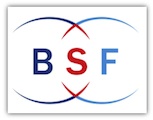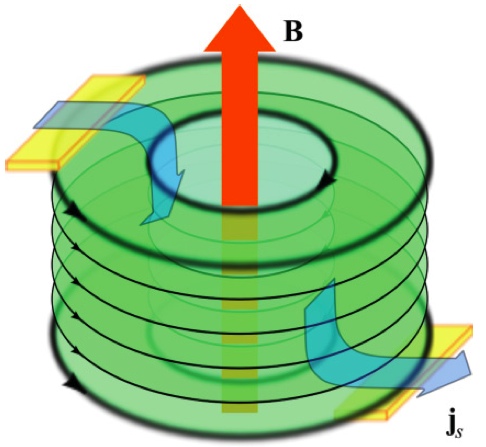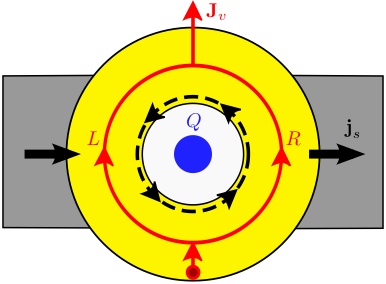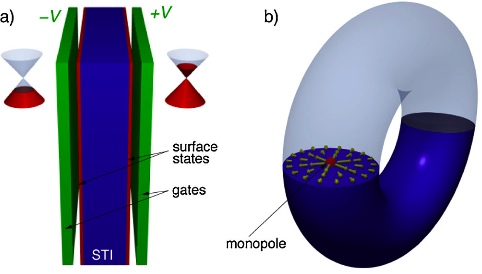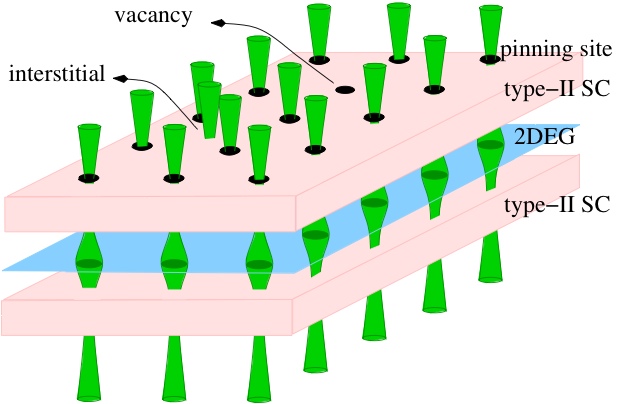Y. Li, H. A. Fertig, B. Seradjeh, Phys. Rev. Res. 2, 043275 (2020);
F. Nur Ünal, B. Seradjeh, A. Eckardt, Phys. Rev. Lett. 122, 253601 (2019);
M. Rodriguez-Vega, A. Kumar, B. Seradjeh, Phys. Rev. B 100, 085138 (2019);
M. Rodriguez-Vega and Babak Seradjeh, Phys. Rev. Lett. 121, 036402 (2018);
A. Kundu, H.A. Fertig, and B. Seradjeh, Phys. Rev. Lett. 116, 016802 (2016);
A. Kundu, H.A. Fertig, B. Seradjeh, Phys. Rev. Lett. 113, 236803 (2014);
Y. Li, A. Kundu, F. Zhong, and B. Seradjeh, Phys. Rev. B 90, 121401(R) (2014);
A. Kundu and B. Seradjeh, Phys. Rev. Lett. 111, 136402 (2013).
For a time-periodic Hamiltonian, although energy is not conserved, there is a conserved quasienergy, \(\varepsilon\). This conservation is a consequence of the discrete time-translation symmetry of the Hamiltonian \(H(t)\) with period \(T\), \(H(t)=H(t+T)\). As a result of this periodicity, the solutions to the Schördinger equation can be written, using Floquet's theorem, as \(e^{-i\varepsilon t/\hbar}\phi(t)\) with a periodic part \(\phi(t) = \phi(t+T)\). The quasienergy \(\varepsilon\) and Floquet wavefunction \(\phi(t)\) are the eigenvalue and eigenstate of the Floquet Hamiltonian \(H_F = H(t)-i\hbar\frac{\partial}{\partial t}\). Quasienergies that differ by an integer multiple of \(\hbar\Omega\), where \(\Omega=2\pi/T\) is the drive frequency, refer to the same physical state. Thus, they can be chosen to be in a “Floquet zone,” e.g. \(-\frac12\hbar\Omega< \varepsilon \leq \frac12\hbar\Omega\). Due to this periodic temporal structure, the quasienergy bands can be quite different in character from the static energy bands. Indeed, under certain conditions, the driven systems has steady topological bound states with no corresponding stationary bound states in a static system. This is reminiscent of “period doubling,” an effect familiar from parametric resonance and stabilization in classical systems: In addition to \(\varepsilon = 0\), steady topological bound states exist with quasienergy \(\varepsilon = \frac12\hbar\Omega\). These period-doubled states have no counterpart in the static systems. Thus, Floquet topological phases constitute an entirely new class of topological phases.
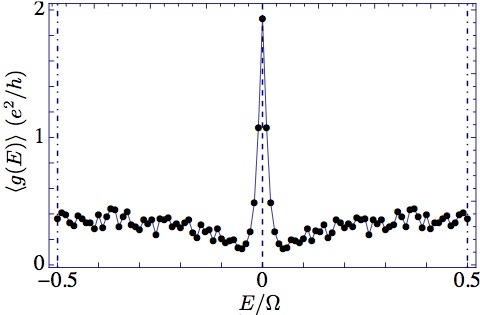
The Floquet sum rule in a disordered system.
In our first work on this topic, we showed, both analytically and numerically, Floquet Majorana fermions at quasienergy \(\varepsilon_M=0\) and/or \(\frac12\hbar\Omega\) give rise to a quantized “Floquet sum rule,” \(g(\varepsilon_M) = 2e^2/h\). Here, \(e\) is the electron's charge, \(g(\varepsilon) = \sum_{n\in\mathbb{Z}} \sigma(\varepsilon + n\hbar\Omega)\), and \(\sigma(E)\) is the usual conductance at bias \(E\). This is a natural extension of the well-known zero-bias conductance of static Majorana fermions to periodic systems. This result can be understood intuitively as the consequence of the unitarity of the interaction with the periodic drive: The sum (over \(n\)) of all transmission probabilities for processes in which scattering states exchange \(n\) “photons” with the drive is one. We showed this result is robust against disorder. Indeed, since disorder localizes the other, non-topological, states of the system, it suppresses the background peaks of \(g\) and can be used as a “sieve” to identify the Floquet Majorana fermions uniquely.
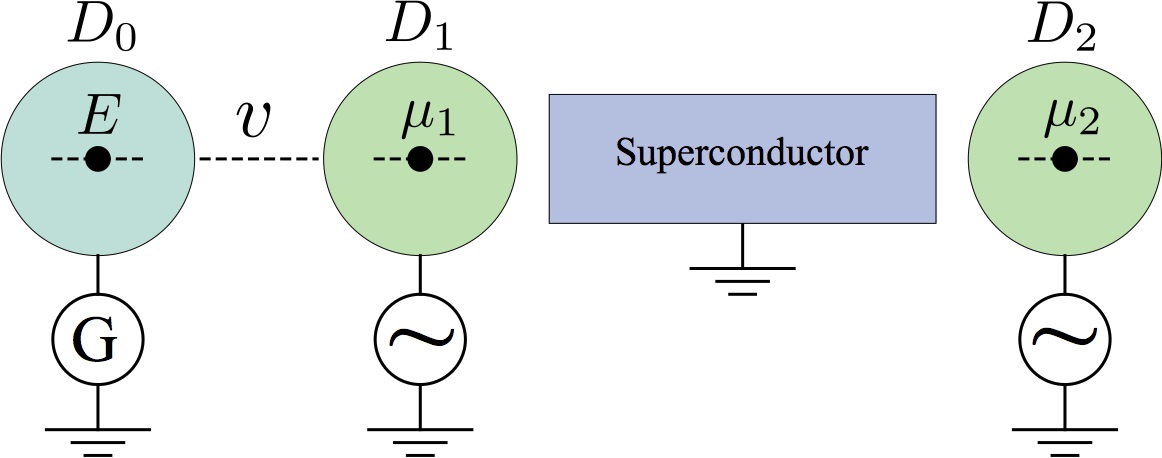
A quantum dots system for Floquet Majorana fermions.
Next, we proposed a way to realize and detect Floquet Majorana fermions in a simple system of two coupled quantum dots with exquisite tunability. This setup is a viable experimental proposal for two reasons: the tuning can be done entirely electronically; the Majorana fermions can be tested using a probe dot unambiguously. Although the topological stability is lost due to the small size of the system, the tunability of the system compensates this loss by making Majorana fermions easily accessible.
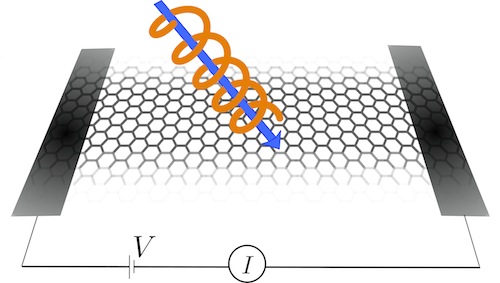
Graphene irradiated with circularly polarized laser.
In a separate project, my colleagues and I performed a theoretical and numerical study of graphene (an atomically thin sheet of graphite) under circularly polarized laser. This system was the original proposal for a Floquet topological phase. We found and characterized a series of distinct Floquet topological phases as the frequency and intensity of the laser is varied. At the transition between these phases, the system is critical with gapless bulk states. In a static situation this critical phase is manifested in a conductance \(\sigma(0)\) of the order \(e^2/h\). However, we showed that the dynamical nature of the topological phase can suppress this conductance due to an combined spatial and temporal symmetry of graphene. Interestingly, this symmetry is spoiled by disorder. Therefore, although one may naively expect disorder to be detrimental to transport, in this case it remarkably enhances the conductance by several orders of magnitude.

Laser-controlled valleytronics in graphene.
More recently, we have studied and proposed a novel way to realize valleytronic devices in two dimensional Dirac material, such as graphene or molybdenum disulfide, by optical engineering of the quasienergy band structure. By mixing and tuning the optical parameters of circularly-polarized lasers appropriately, the non-equilibrium steady state of electrons in different valleys can be differentiated to have unequal gaps. In particular, the gap at one valley can be closed while the gap at the other valley is still open. The conductance in this case is strongly valley-polarized. By opening and closing these gaps optically in different parts of the system, one may realize a valley switch. The valley-polarized conductance is protected against moderate impurity disorder and variations in optical parameters. This opens the way to engineering robust, novel electronic phases with light.





